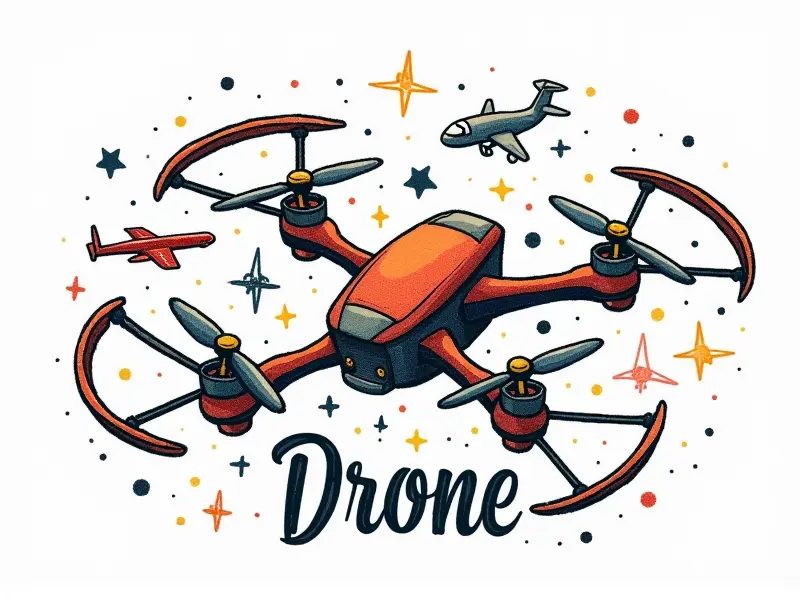Best settings for drone cameras?

Ultimate Guide to Drone Camera Optimization
Welcome to the ultimate guide on optimizing your drone camera settings for stunning aerial photography and videography. Whether you're a beginner or an experienced pilot, this comprehensive article will help you unlock the full potential of your drone's camera.
Essential Tips for Great Drone Camera Shots
- Understand Your Drone: Familiarize yourself with your drone’s capabilities and limitations. Different drones offer varying levels of camera quality, resolution, and features like gimbal stabilization.
- Leverage the Right Mode: Use modes such as Sport or Cinematic to capture dynamic shots that suit your needs. Each mode offers unique settings for optimal performance.
- Master Exposure Settings: Adjust ISO, shutter speed, and aperture to control light exposure effectively. Proper exposure ensures clear, vibrant images without overexposure or underexposure.
Maximize Your Drone's Camera Potential Today
To get the most out of your drone camera, it’s essential to fine-tune its settings for different shooting scenarios:
- Daytime Photography: Opt for a lower ISO and faster shutter speed to avoid graininess. Use aperture priority mode to control depth of field.
- Night Photography: Increase the ISO slightly but keep it within acceptable limits to maintain image quality. A slower shutter speed can help capture more light.
Secrets to Perfect Drone Photos and Videos
Here are some insider tips for achieving professional-quality images and videos with your drone:
- Use Manual Focus: For precise control over focus, switch from auto-focus to manual. This is especially useful when shooting in challenging lighting conditions.
- Experiment with White Balance: Adjust the white balance settings according to your environment for accurate color representation.
Best Practices for Drone Camera Adjustments
To ensure consistent high-quality results, follow these best practices when adjusting your drone camera settings:
- Calibrate Your Equipment: Regularly calibrate your drone and camera to maintain optimal performance.
- Keep Software Updated: Stay current with firmware updates for the latest features and bug fixes.
Fine-Tuning Your Drone Camera Setup
A well-tuned setup is crucial for achieving top-notch drone footage. Here’s how to fine-tune your camera:
- Adjust Image Quality Settings: Choose the highest resolution and quality settings available for maximum detail.
- Optimize Video Formats: Select appropriate video formats based on intended use, such as 4K for high-definition content or lower resolutions for social media sharing.
Achieving Pro-Quality Images from Your Drone
To produce professional-grade images and videos with your drone, consider these advanced techniques:
- Utilize Post-Processing Tools: Use software like Adobe Lightroom or Luminar to enhance your footage after capture.
- Incorporate Drone Flight Patterns: Experiment with different flight patterns and angles for dynamic shots that stand out.
Top Camera Settings for Stunning Drone Footage
The following settings are ideal for capturing breathtaking drone footage:
- ISO: 100-400
- Shutter Speed: 1/250 - 1/60 sec.
- Aperture: f/8 to f/16 for landscape shots, wider apertures for portraits and close-ups.
Essential Tips for Drone Camera Settings
Here are some essential tips to remember when adjusting your drone camera settings:
- Test in Different Conditions: Experiment with various lighting conditions to understand how different settings affect image quality.
- Backup Your Data: Always back up your footage regularly to avoid data loss.
Ideal Camera Presets for FPV Racing Drones
If you’re into FPV racing, here are some ideal camera presets tailored specifically for this type of drone:
- High Frame Rate: Use a high frame rate to capture fast-paced action clearly.
- Wide Angle Lens: Opt for a wide-angle lens to get a broader field of view during races.
Best Exposure Settings for Your RC Quadcopter Cam
To ensure optimal exposure in your quadcopter camera footage, follow these guidelines:
- Bright Conditions: ISO 100-200, Shutter Speed 1/500 - 1/1000 sec., Aperture f/8-f/16.
- Overcast or Low Light: ISO 400-800, Shutter Speed 1/250 - 1/30 sec., Aperture f/5.6-f/8.
Conclusion
In conclusion, mastering your drone camera settings is key to capturing stunning aerial footage and photos. By following the tips and best practices outlined in this guide, you can elevate your drone photography and videography skills to new heights. Experiment with different settings and techniques to find what works best for your specific needs and creative vision.

